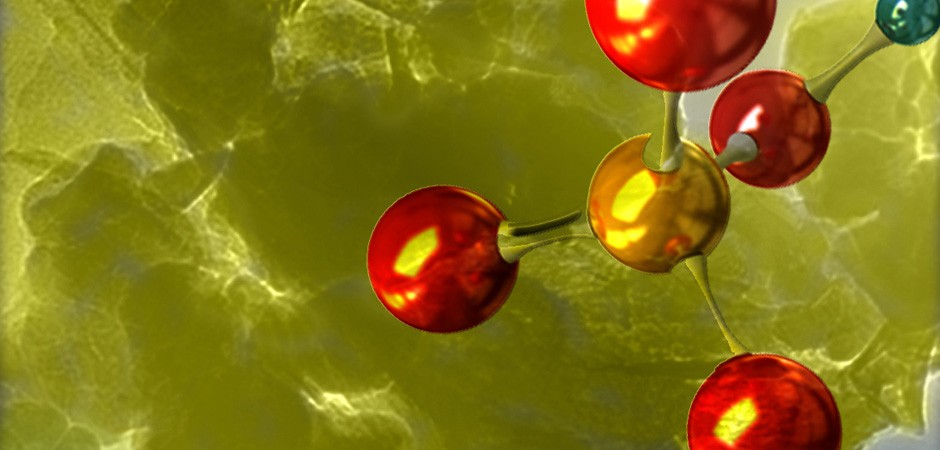- Details
- Published on 01 January 2011
Synthesis of biokerosene from linseed oil over mesocarbon based catalyst for blending with commercial jet fuel
Nguyễn Khánh Diệu HồngThis email address is being protected from spambots. You need JavaScript enabled to view it., Trần Quốc Hải
Viện Kỹ thuật Hóa học, Trường Đại học Bách khoa Hà Nội
, Volume 8, Issue 3, pp 16–24
ABSTRACT
In this report, mesoporous carbon based catalyst derived from wast microalgal biomass – mesocarbon catalyst, was characterized for its mesoporous structure, thermal behavior under nitrogen atmosphere. The structural changes of the catalyst before and after being pelletized by silica-gel was also conducted. These investigations clearly proved its ordered mesoporous channels and good stability for synthesizing biokerosene derived from linseed oil. The synthesis of biokerosen was also investigated through many parameters including temperature, time, catalyst content, molar ratio of methanol/feedstock and stirring speed. After that, the biokerosene was blended with Jet A-1 commercial fuel for considering its potential of application. The results showed that the biokerosene could be easily synthesized under mild conditions and favorably blended with the Jet A-1 fuel. The maximum content of the biokerosene in the blended fuel should be 15% by volume, and this provided the fuel with suitable specifications for the applications in the Jet engines. Methods using for characterizing the catalyst and biokerosene included SAXRD, WAXRD, TG-DSC-MS and GC-MS.
- Details
- Published on 01 January 2011
Nguyễn Phạm Chí Thành1, Trần Doãn An1, Nguyễn Văn Phúc2, Nguyễn Tấn Lâm1, Hồ Văn Ban1, Nguyễn Phi Hùng1, Võ Viễn1,2This email address is being protected from spambots. You need JavaScript enabled to view it.
1 Khoa Hóa, Trường Đại học Quy Nhơn,
2 Viện nghiên cứu ứng dụng khoa học và công nghệ, Trường Đại học Quy Nhơn.
, Volume 8, Issue 3, pp 32–37
ABSTRACT
As a fascinating conjugated polymer, graphitic carbon nitride (g-C3N4) has attracted much attention as a metal-free and visible-light-responsive photocatalyst in the energy and environmental application. However, pure g-C3N4 performs a poor photocatalytic activity since various limitations, such as fast recombination rate of photo-induced charge carriers, weak visible light harvesting as well as low specific area study. This study reports on the modification of g-C3N4 by O-doping, in which, the materials were prepared by heating urea (treated previously by H2O2) at 550 ºC for 1h, which were denoted as x-OCN where x is the volume (mL) of H2O2 (30% solution) per 10 g urea (x = 20, 40, 60 ). The obtained materials were characterized by IR, XRD, UV-Vis DRS, XPS and SEM, which demonstrated that oxygen-doped g-C3N4 has been successfully synthesized. Photocatalytic activity of g-C3N4 and x-OCN was assessed by the degradation of Rhodamine B (RhB) in visible light range. Among the x-OCN samples, 40-OCN is the best one with efficiency of 94%, 1.77 times higher than pure g-C3N4.
- Details
- Published on 01 January 2011
Several factors affecting the synthesis HKUST-1 from Cu(OH)2
Lê Văn Dương1This email address is being protected from spambots. You need JavaScript enabled to view it., Bùi Thị Thanh Hà2, Lê Ngọc Dương3, Tạ Ngọc Đôn1
1Viện Kỹ thuật Hóa học, Đại học Bách Khoa Hà Nội, Số 1, Đại Cồ Việt, Hà Nội.
2Đại học Dược Hà Nội
3Trường Cao đẳng Y dược Hà Nội
, Volume 8, Issue 3, pp 38-44
ABSTRACT
By following previous literature report, we successfully synthesized HKUST-1 (material) from Cu(OH)2 in the solvent system of ethanol/water by using the solvothermal method. Herein, we have studied the number of factors such as concentration of main components, solvents and supplements TMAOH content which are influenced the targeted HKUST-1 material. Our results show that the optimal ratio of components is Cu(OH)2:H3BTC: EtOH: H2O = 9:7.2:10:20 (mmol: mmol: ml: ml); TMAOH affects significantly the yield of HKUST-1.
- Details
- Published on 01 January 2011
Nguyễn Phi Hùng1This email address is being protected from spambots. You need JavaScript enabled to view it., Huỳnh Thị Tuyết Nhung2, Nguyễn Lê Tuấn2, Phan Thanh Hải2, và Huỳnh Thị Miền Trung2This email address is being protected from spambots. You need JavaScript enabled to view it.
1 Viện Khoa học giáo dục , Trường Đại học Quy Nhơn, 170 An Dương Vương, TP. Quy Nhơn, Bình Định
2 Khoa Khoa học tự nhiên, Trường Đại học Quy Nhơn, 170 An Dương Vương, TP. Quy Nhơn, Bình Định
, Volume 8, Issue 3, pp 53-57
ABSTRACT
A combination of cyclic voltammetry (CV), linear sweep voltammetry (LSV) and in-situ electrochemical scanning tunneling microscopy (EC-STM) was employed to characterize the electrochemical response, morphology and surface structure at the molecular level as well as the electrocatalytic activity of self-assembled binary monolayer of two different porphyrin molecules electrodeposited on Cu(100) electrode. Individual phorphyrin compound locates in separated domains. The mixed domain of both was not observed. Based on the LSV results, this self-assembled binary monolayer enables enhancement the oxygen electroreduction to hydro peroxide (H2O2). This finding opens a new avenue to improve the efficiency of the oxygen electroreduction making use such binary organic molecular self-assemblies.
- Details
- Published on 01 January 2011
Do Van Cuong1, Truong Thi Hanh2, Do Ngoc Mai1, Nguyen Thi Nhiem1, Doan Thi Hai1, Le Thi Hoai Nam1 and Tran Quang Vinh1,3,This email address is being protected from spambots. You need JavaScript enabled to view it.
1 Viện Hóa học, Viện Hàn lâm Khoa học và Công nghệ Việt Nam, 18 Hoàng Quốc Việt, Cầu Giấy, Hà Nội, Việt Nam
2 Đại học Hàng Hải Việt Nam, 484 Lạch Tray, Lê Chân, Hải Phòng, Việt Nam
3 Học viện Khoa học và Công nghệ, 18 Hoàng Quốc Việt, Cầu Giấy, Hà Nội, Việt Nam
, Volume 8, Issue 3, pp 8–15
ABSTRACT
12-phosphotungstic acid (HPA) heterogeneous catalyst was immobilized on Al-SBA-15 support over different compensation ions (NH4+ and Cs+) created by ion-exchange method. The presence, content of HPA and its effect on the support structure were characterized by EDX, FTIR, XRD, BET and TPD-NH3 methods. The results showed that HPA could be immobilized on Al-SBA-15 support up to 24.28 wt.% over NH4+ and 23.16 wt.% over Cs+. Both HPA/Al-SBA-15 catalysts showed very high acidity. By using Cs+, HPA could be immobilized better than by using NH4+ via the left HPA content inconsiderably decreased after five washing times with ethanol-water mixture. In Fructone synthesis, both catalysts showed high catalytic activity with high ethyl acetoacetate conversion. Moreover, HPA/Al-SBA-15 catalysts showed good catalytic stability after five reaction cycles with slightly decreasing of activity. Especially, the HPA/Al-SBA-15 in which HPA was immobilized over Cs+ ion showed better catalytic stability in comparison to that over NH4+ ion.















